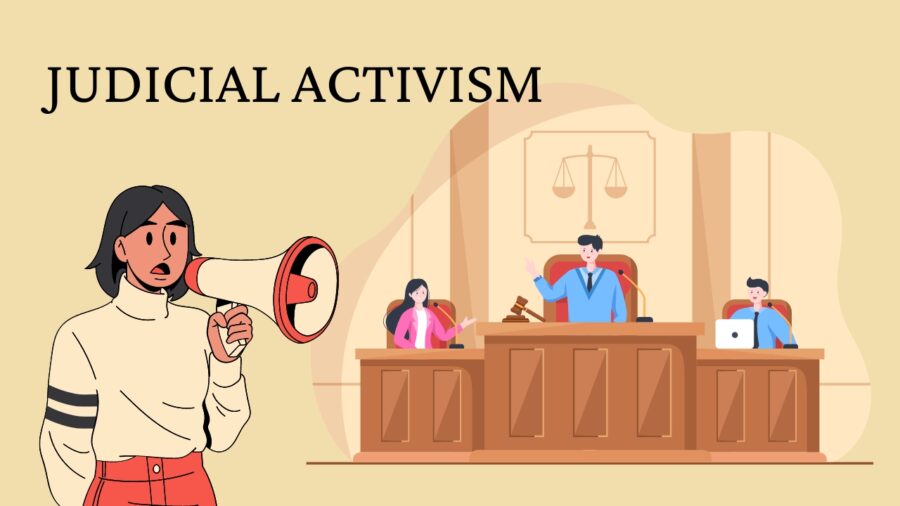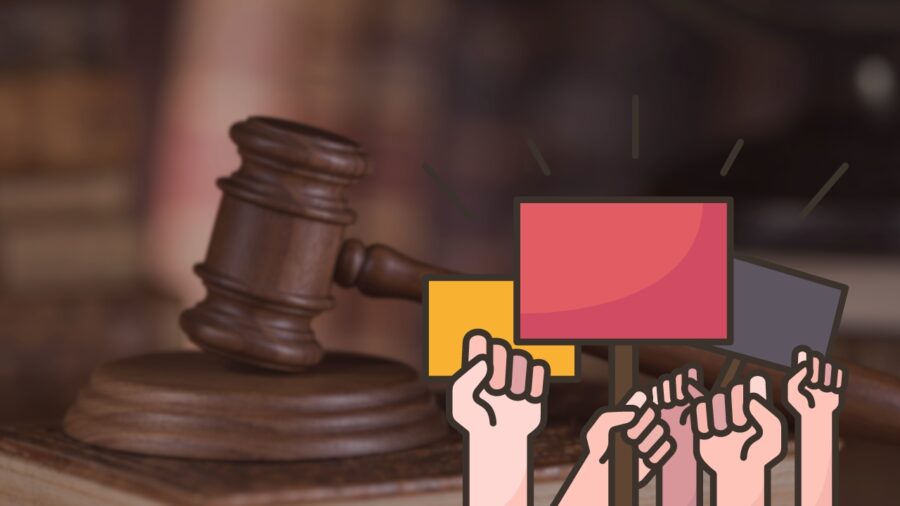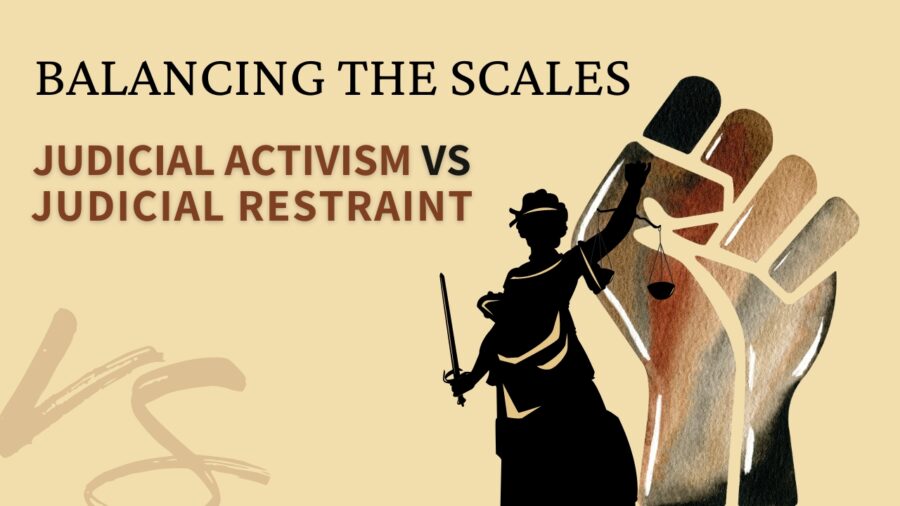Understanding the dichotomy between judicial activism and judicial restraint is integral to our comprehension of the modern judicial system. As we dissect these contrasting theories, we discover the intrinsic nuances of how our courts balance power, interpret the law, and decide on constitutional questions.
The dynamics of judicial activism and restraint trace their roots to the very formation of our legal system. In the grand tapestry of judicial decision-making, they represent opposite, yet equally important, perspectives.
The gulf between them stems from differing interpretations of the Constitution, the role of the judiciary, and how legal precedents should be applied. So, let’s dig deeper into this fascinating interplay and discover how it shapes the foundation of our justice system.
Judicial Activism: Catalyst for Change
Judicial activism refers to a philosophy that encourages judges to go beyond the law’s strict interpretation. It encourages courts to use their authority to correct perceived injustices, especially when the other branches of government fail to do so.
Under the umbrella of judicial activism, courts are often willing to overturn precedents and challenge traditional boundaries. In essence, they are more open to change, and this approach has been instrumental in catalyzing significant societal transformations.
The famous case of Brown v. Board of Education (1954) epitomizes judicial activism. Here, the Supreme Court of the United States declared racial segregation in public schools unconstitutional, effectively dismantling the ‘separate but equal’ precedent established in Plessy v. Ferguson (1896). This ruling reshaped American society and demonstrated how judicial activism can serve as a potent tool for societal reform.
However, critics argue that judicial activism can potentially overstep the judiciary’s bounds. They posit that this approach undermines the principles of separation of powers and democratic rule by allowing judges to legislate from the bench.
Judicial Restraint: Upholding the Status Quo
Contrarily, judicial restraint is a philosophy that encourages judges to limit the exercise of their power. Advocates believe in strict adherence to legal precedent and a literal interpretation of the Constitution. They argue that the judiciary should rarely declare legislative acts unconstitutional, thereby giving deference to the elected branches of government.
The concept of judicial restraint is rooted in the principle of stare decisis, Latin for “to stand by things decided.” By following established legal precedents, courts ensure stability and predictability in the legal system.
Justice Felix Frankfurter was a notable proponent of judicial restraint, often advocating for courts to defer to the other branches of government. He famously dissented in the case of West Virginia State Board of Education v. Barnette (1943), arguing that the court overstepped its bounds by striking down a law requiring students to salute the flag.
However, critics argue that an overly restrained judiciary may allow societal injustices to persist, particularly when other branches of government fail to rectify them.
The Scale of Balance
The relationship between judicial activism and restraint isn’t inherently antagonistic. In fact, a balanced judiciary might be seen to navigate between these two philosophies based on the requirements of individual cases and societal circumstances.
History has shown us the necessity of both perspectives. For instance, judicial activism can spark significant social change, driving progress and innovation. Conversely, judicial restraint can uphold societal order, providing stability and maintaining respect for democratic decision-making.
Arguments For and Against Judicial Activism

The proponents of judicial activism believe that it plays an essential role in ensuring justice, especially in circumstances where other branches of government may not adequately address societal inequities. For example, it was judicial activism that drove landmark decisions like Roe v. Wade (1973), where the Supreme Court declared that the constitutional right to privacy extended to a woman’s decision to have an abortion.
However, judicial activism has its detractors as well. Critics argue that judges who engage in activism may base their decisions on personal beliefs or current societal trends rather than on the Constitution. They contend that judges should interpret the law, not make it, and should leave policy-making to the legislative and executive branches.
Arguments For and Against Judicial Restraint
Judicial restraint has its share of advocates and critics as well. Supporters of judicial restraint appreciate the philosophy’s respect for the democratic process and the separation of powers. By refraining from overriding the decisions of the legislative or executive branches, courts uphold democratic decisions made by the people’s elected representatives.
Opponents of judicial restraint, on the other hand, argue that it may allow unconstitutional laws to stand. By refusing to challenge the decisions of other branches of government, the courts may let injustices persist. This hesitance can limit progress and hinder the protection of individual and minority rights.
Landmark Cases Revisited: An Activism vs. Restraint Perspective
1. Brown v. Board of Education (1954)
As we delve back into the case of Brown v. Board of Education, we see that it represents a pivotal moment in judicial activism. The Supreme Court’s decision to declare racial segregation unconstitutional was a clear break from the precedent established in Plessy v. Ferguson. Here, the Court actively used its power to rectify an injustice that the legislative branch had been unable to address.
2. Gonzales v. Raich (2005)
In this case, judicial restraint was exemplified when the Supreme Court ruled that the federal government could prohibit the use of medical marijuana, even in states where it was legalized. The Court showed restraint by deferring to Congress’s power to regulate interstate commerce, despite arguments that its application in this context was unjust.
The Role of the Judiciary: Reflecting on Activism and Restraint

Within the United States, the courts, especially the Supreme Court, play a crucial role in interpreting the Constitution and shaping the nation’s laws. The two philosophies of judicial activism and judicial restraint fundamentally influence these interpretations.
The court’s role becomes particularly relevant in cases where the Constitution is ambiguous or silent. Here, the question isn’t just about interpreting the law but also filling the gaps where the law doesn’t explicitly provide an answer. Depending on a judge’s perspective—whether they lean towards activism or restraint—the outcome can vary significantly.
Contextualizing Judicial Activism and Restraint
To better comprehend judicial activism and restraint, it’s crucial to consider them within the broader context of evolving societal norms and values.
Judicial Activism in a Changing Society
Judicial activism often emerges when society faces new challenges that the framers of the Constitution could not have anticipated. In these instances, the courts may take an active role in interpreting the Constitution to reflect contemporary values and norms.
A classic example of this is the Supreme Court’s decision in Obergefell v. Hodges (2015), where the Court extended the right to marry to same-sex couples. This decision was a clear departure from traditional norms, yet it reflected the evolving societal understanding of equality and human rights.
Judicial Restraint Amidst Societal Change
Even amidst changing societal norms, judicial restraint remains an essential aspect of the judiciary’s role. A restrained court understands its position as part of the broader system of checks and balances. Thus, it’s cautious not to infringe upon the responsibilities of the other branches of government.
Judicial restraint can be seen in the Supreme Court’s decision in NFIB v. Sebelius (2012), where it upheld the Affordable Care Act. Despite the contention surrounding the issue, the Court deferred to the legislative branch, underlining the significance of judicial restraint in maintaining the balance of power.
Final Words

The delicate balance between judicial activism and judicial restraint is central to the dynamics of the U.S. judiciary. Both philosophies have played significant roles in shaping the nation’s legal and social landscapes, influencing landmark rulings that still reverberate today.
In the end, the oscillation between these two principles is not a mere academic debate but a practical, real-world issue that influences the lives of everyday citizens. As we continue to engage with these concepts, we learn more about the law, its interpretation, and its impact on society, helping us navigate the complex world of judicial decision-making with more knowledge and insight.

